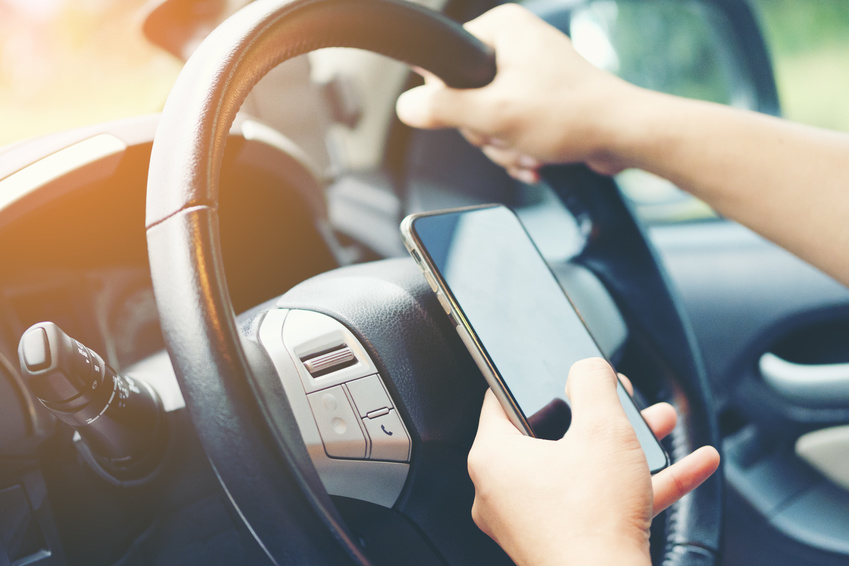 Although drunk driving is a huge threat to motorists on the road, experts say that distracted driving behaviors — including texting and engaging in social media feeds — is just as dangerous. And according to recent studies, the number of drivers who text and drive (and the frequency at which they do so) is getting worse.
Although drunk driving is a huge threat to motorists on the road, experts say that distracted driving behaviors — including texting and engaging in social media feeds — is just as dangerous. And according to recent studies, the number of drivers who text and drive (and the frequency at which they do so) is getting worse.
The average drunk driver has driven drunk approximately 80 times before they’re ever arrested, but many drivers are adamant they’d never get behind the wheel while intoxicated. That same level of insistence is evidently not found with distracted driving behaviors, however. Despite the fact that one study found that the percentage of drivers using handheld phones and other electronic devices actually decreased from 3.8% in 2015 to 3.3% in 2016, other research has found that the problem is actually becoming more pronounced on U.S. roads.
A study published by Zendrive, a startup based in San Francisco that tracks phone use for both ride-hailing companies and auto insurers, revealed that Americans are more likely than ever to use their phones while driving. In an analysis of 4.5 million users, the company found that the number of individuals who text, scroll, or mess around with their phones when they’re operating a vehicle is increasing in every major city and in every state (except for Vermont). Not only that, but the time they’re spending on their phones in these situations is increasing, too.
Zendrive reports that more than 60% of drivers check their cell phones while driving, using their phones for an average of one minute and 52 seconds per every hour. But that estimate includes people who didn’t use their phones at all while driving. When you remove those outliers, the average distracted driver uses their phone for three minutes and 40 seconds per hour.
Another study from Drivemode, a safe driving app, that analyzed 6 million text messaging sessions found that certain times of day are worse for distracted driving. They found that the evening rush hour is the time period during which commuters are most prone to reading and sending texts on their phone while in traffic. Some states were found to be worse than others, with New York, Hawaii, Florida, Massachusetts, Oregon, Colorado, Utah, Washington, Texas, and California being the top 10 offending states for texting during peak rush hour.
Of course, there are serious implications here. Current data suggests that only 16% of car crash fatalities can be attributed to distraction, but that number could be potentially higher than previously thought. Experts do know that the chance of injury or fatality increases significantly every second a drivers’ eyes are off the road. And clearly, legislation is not enough to reduce these rates; even the states that have instituted cell phone bans for drivers saw increased usage in Zendrive’s study.
Zendrive founder Jonathan Matus explains in the report: “As you have more young drivers on the road, and as people increasingly become addicted to their smartphones, it will continue being a major health issue — almost an epidemic — in this country.”
That may be why some companies are taking a more creative approach in the hopes of reducing these dangerous behaviors. In Sweden, Volkswagen cars and brand management company NordDDB have teamed up to create a product called Crashed Cases. These specially produced iPhone 8 cases are actually made from the metal recovered from car crashes. This limited, 153-case run is symbolic of the number of serious car accidents during the month of February throughout Sweden. A law banning cell phone use while driving was also passed that same month, but the legal consequences have not yet deterred drivers there either. Proceeds from the sales of the unique, engraved cases (which each cost around $70 USD) will go to Trafikskadefonden, a Swedish accident survival and rehabilitation group that helps those who have been impacted by road crashes.
It’s possible that carrying around a daily reminder of the potentially fatal consequences of texting while driving could convince tech-loving motorists from using their phone while behind the wheel. And even though two-thirds of parents worry their children spend too much time on electronic devices, it’s important to take a hard, honest look at how adults with driver’s licenses interact with technology, too. Since cell phones aren’t going anywhere, America may need to think outside the box if we want to make a serious dent in distracted driving here at home.






